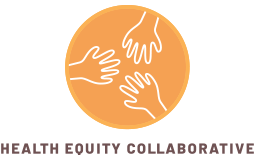10 Jul 35 Years of the ADA: The Promise of Accessible Healthcare is Still Unfulfilled
Access Was Only the Beginning
When the Americans with Disabilities Act became law in 1990, it marked a defining moment in civil rights. For the first time, people with disabilities were promised equal access to the places, services, and systems that shape everyday life.
Thirty-five years later, that promise remains incomplete, especially in healthcare.
Healthcare Still Leaves People Out
For many disabled Americans, the journey to receive care is filled with barriers. Not abstract ones, but physical, digital, and human.
- 1 in 4 adults with disabilities aged 18 to 44 years do not have a usual healthcare provider
- 1 in 4 adults with disabilities aged 18 to 44 years have had an unmet healthcare need because of cost in the past year
- 1 in 6 adults with disabilities aged 45 to 64 years did not have a routine check-up in the past year
Medical offices often lack accessible exam tables and diagnostic equipment. Patient portals and telehealth platforms are usually built without considering the needs of users with visual impairments, such as those who rely on screen readers, captions, or alternative navigation methods. Communication accommodations, such as ASL interpreters or plain-language materials, are inconsistent and sometimes absent.
These are not rare exceptions. They are patterns rooted in systems that were never designed with disabled people in mind.
And when people do reach a provider, they are too often met with hesitation or bias. Some clinicians still assume that life with a disability means a lower quality of life. Others lack the training to engage patients with complex needs or multiple disabilities. This isn’t just frustrating. It leads to missed diagnoses, delayed treatments, and poorer outcomes.
Equity Means More Than Compliance
The ADA laid the foundation for access, but access is not the same as equity.
Healthcare equity means more than removing physical barriers. It means building a culture of inclusion, where providers are trained to understand disability as part of human diversity. It means designing digital systems that work for everyone, not just the majority. It means ensuring that communication is clear, respectful, and compelling.
And it means listening to people with disabilities, not as problems to be solved, but as experts in their health.
New Challenges, New Opportunities
In the past few years, momentum has grown. National research institutions are finally recognizing people with disabilities as a population that experiences health disparities. On May 8, 2025, the Access to Digital Therapeutic Act was reintroduced in Congress, aiming to remove systemic barriers to care by expanding access to software-based treatments. Medical schools are beginning to introduce disability competency training.
These are encouraging steps, but they are just that—steps.
We cannot wait another generation for equity to arrive. The solutions are already on the table: inclusive design, accessible equipment, better data collection, and training that treats disability as a core part of public health, not a footnote.
Honoring the ADA by Moving Forward
Thirty-five years ago, the ADA opened the door. Now it is time to walk through it.
That means more than checking boxes. It means holding systems accountable. It means demanding healthcare that is not just available, but welcoming. Not just accessible, but equitable.
The ADA was never meant to be the final word. It was the beginning of a more profound commitment to dignity and justice. That work is still unfinished, but it’s not too late to complete it.
Let this anniversary be more than a celebration. Let it be a call to act.


